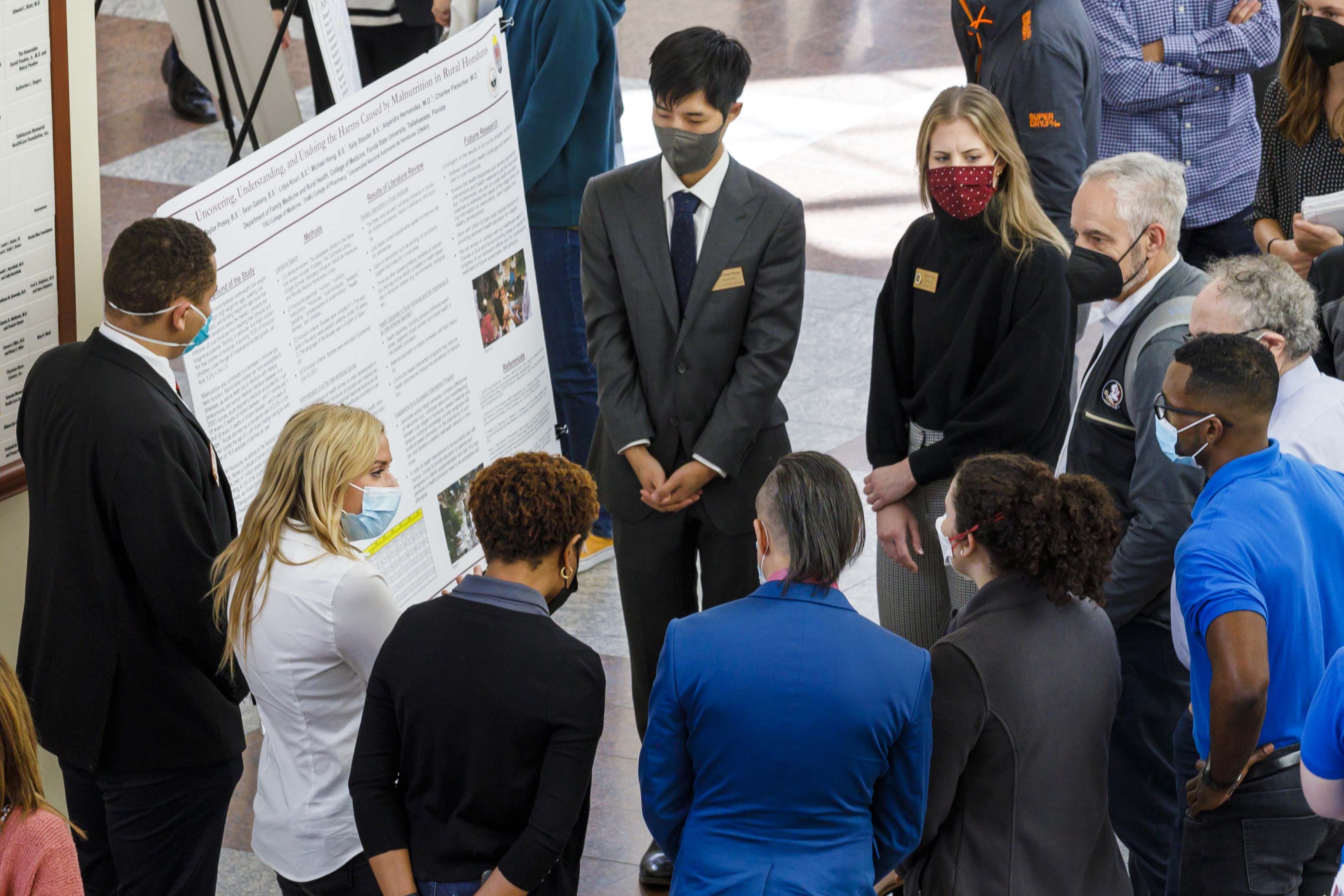On Friday, Feb. 11, dozens of Florida State University College of Medicine students gathered to showcase research ranging from the effects of nicotine on pregnancy to how best to decrease rates of malnutrition in Honduras.
The event featured medical students who participated in the Summer Research Fellowship Program. The program requires students to present their research orally as well as on a poster.
The focus of many projects this year was not only to identify a problem or issue, but also to identify the root of that issue and provide a viable solution that tackles it.
“Almost everything we do here is translational at some point,” said Jeffrey Joyce, senior associate dean for Research and Graduate Programs, “meaning it’s going to have impact on people.”
Melissa Newsome, a researcher at the FSU Center for Behavioral Health Integration, worked with students looking into the dramatic disparities in health care, specifically pregnancy- related health care for black women. Newsome said one goal in her project was to increase discussions on how healthcare providers can better meet the needs of black women.
“We want to use this information to enhance the training that we provide through Florida BH Impact, inform [through] the resources and tools we are creating, and find evidence-based ways to support them in providing actual patient-centered care,” Newsome said.
Many of the projects dealt with obstacles presented by the COVID-19 pandemic.
“It is vitally important for faculty, medical students, and graduate students to actually interact with others and demonstrate the quality of their research,” said Joyce, who added that despite the challenges presented, “researchers were incredible in pivoting to different strategies [because of COVID].”
Medical students Sean Gabany, Taylor Posey, Michael Hong and Sally Stauder, looked into health disparities in Honduras with a goal of exploring the damage of caused by these inequities, including declining mental health and stunted growth. Simultaneously, they explored how to address the problem collaboratively with those affected.
Specifically, they examined the best way to distribute surveys to villages that were difficult to reach because of mountainous terrain and worked with translators to ensure that surveys were correctly written for local populations. The surveys would help to fill in any gaps in knowledge about health concerns in the country.
Hong said that an essential part of the process of creating the survey was to get as many sources as possible for their literature review, so that they could compare common findings in order to establish the most effective intervention program.
- Chloe Dennis, University Communications intern


